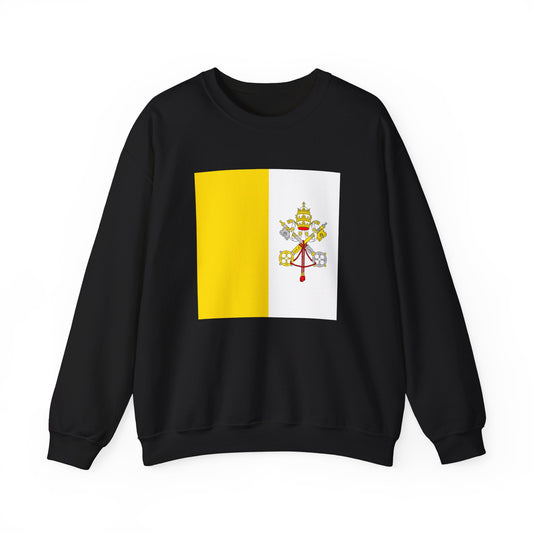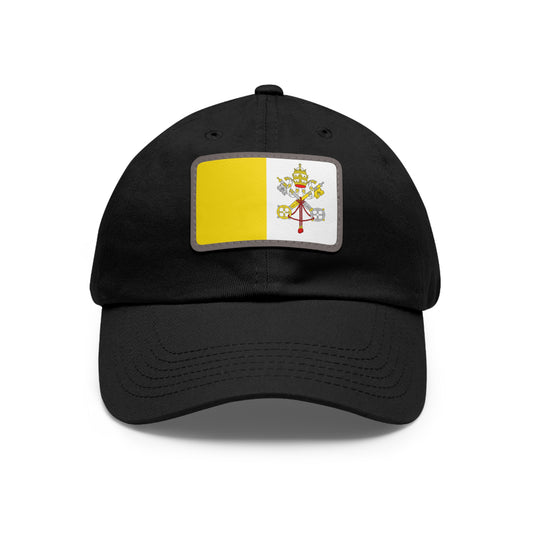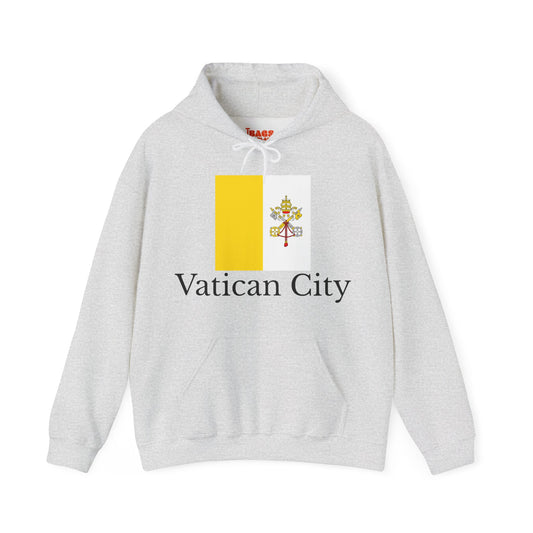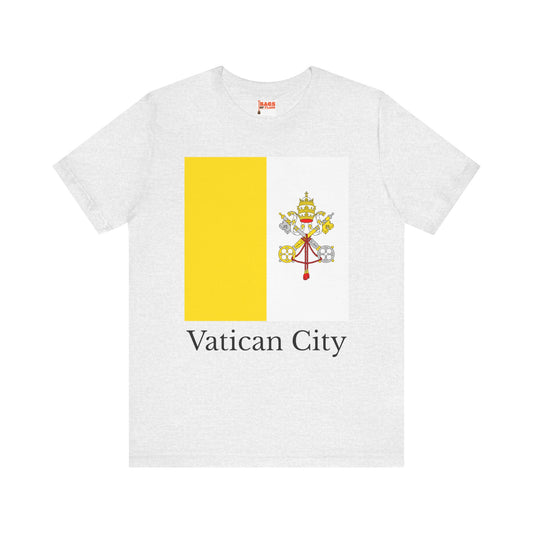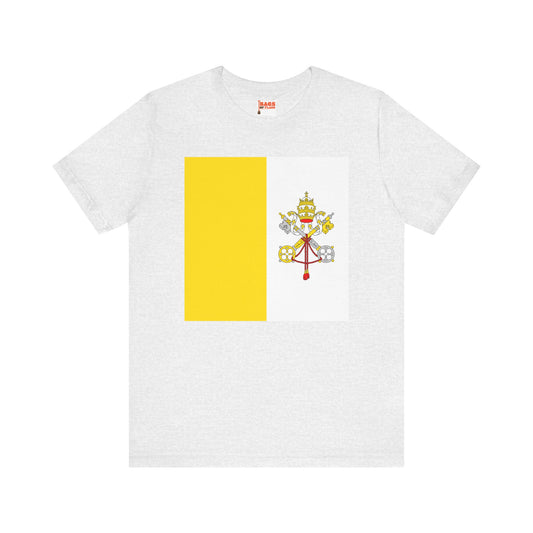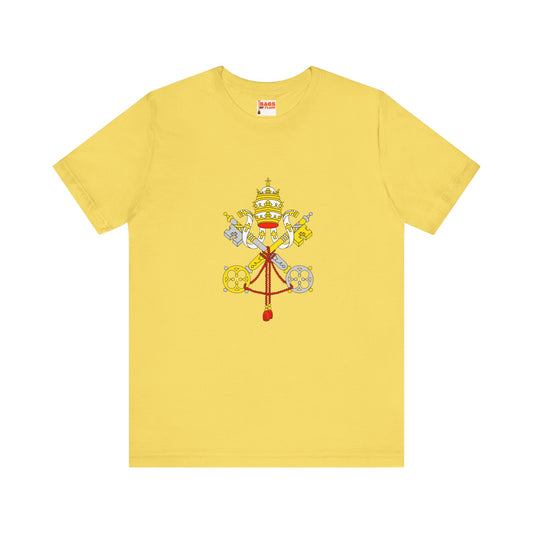-
Vatican City Sweatshirt
Regular price $34.15 USDRegular priceUnit price / per -
Vatican City Inspired Sweatshirt
Regular price $34.15 USDRegular priceUnit price / per -
Vatican City Flag Sweatshirt
Regular price $34.15 USDRegular priceUnit price / per -
Vatican City Pillow
Regular price $22.65 USDRegular priceUnit price / per -
Vatican City Leather Patch Hat
Regular price $18.85 USDRegular priceUnit price / per -
Vatican City Hoodies
Regular price $34.40 USDRegular priceUnit price / per -
Vatican City T-shirts
Regular price $22.79 USDRegular priceUnit price / per -
Vatican City Flag Hoodies
Regular price $34.40 USDRegular priceUnit price / per -
Vatican City Flag on T-shirt
Regular price $22.79 USDRegular priceUnit price / per -
Vatican Inspired Hoodies
Regular price $34.40 USDRegular priceUnit price / per -
Vatican City Inspired T-shirts
Regular price $22.79 USDRegular priceUnit price / per
Collection: Vatican City
The Vatican City flag, also known as the flag of Vatican City, is a symbol of the smallest independent state in the world. This flag has a rich history and deep symbolism that represents the values and traditions of the Vatican. We will explore the design, historical context, symbolism, current relevance, and additional facts surrounding the Vatican City flag.

Overview of the Vatican City Flag
Sporting two vertical bands, the left side drenched in gold and the right in white, the Vatican City flag embodies a rich tapestry of spiritual significance and political sovereignty. At its heart, the emblem featuring the crossed keys of Saint Peter and the Papal Tiara commands attention, seamlessly blending the flag's aesthetic appeal with its profound religious connotations.
The gold band signifies not just luxury but the glory and spiritual leadership bestowed upon the Papacy, while the white band echoes themes of peace, purity, and the Papal mission to guide the faithful. This dichotomy of colors not only delineates the Vatican's dual authority but also encapsulates the essence of its role in the world as both a temporal and spiritual epicenter. The placement of the keys and tiara, central and intertwined, further emphasizes the intertwined nature of the Pope's responsibilities, overseeing the welfare of the City and the global Catholic community.
Historical Context of the Flag
The flag of Vatican City was officially introduced on June 7, 1929, as a tangible sign of the Vatican's newfound sovereignty following the signing of the Lateran Treaty with Italy. This pact acknowledged Vatican City as an independent state and necessitated a distinct flag to symbolize its autonomy and spiritual leadership. Since its inception, the flag has undergone no modifications, signifying the enduring nature of the Papal office and the unaltered principles of the Vatican.
The events leading to its adoption were pivotal, marking the end of a prolonged negotiation period over the Papal States' status and the beginning of a new era for the Vatican’s role within the religious and global political arenas. This moment in history solidified the Vatican’s identity as a sovereign entity, granting it the ability to navigate international relations and assert its independence while upholding its religious mission.
Symbolism Behind the Design

The Vatican City flag is imbued with rich symbolism that intertwines the spiritual and the sovereign. The dominant feature, the crossed keys of Saint Peter, are a direct nod to the biblical keys to heaven, entrusted to Peter as a symbol of the Pope's ultimate spiritual authority over the Catholic Church. These keys, one gold and one silver, represent the dual nature of the Papacy's responsibilities - the gold key signifies heavenly power. In contrast, the silver key denotes the spiritual influence on Earth.
Adjacent to the keys, the Papal Tiara, also known as the Triregnum, stands prominently, symbolizing the Pope's threefold powers: as the pastor of souls, the governor of the Church, and the leader of the world’s Catholics. This triad of roles underscores the Pope's temporal (worldly) authority, distinguishing his position as a spiritual guide and a sovereign ruler.
The color scheme of gold and white further enriches the flag’s spiritual narrative. Gold, a color often associated with divinity and kingship, highlights the Pope's ultimate authority and the Church's richness in virtues. White, on the other hand, projects purity, faith, and peace - essential virtues of the Catholic faith and its mission. Together, these elements encapsulate the Vatican's dual role as a city-state and the spiritual heart of the Catholic Church, reflecting a legacy of faith that transcends temporal power.
Current Relevance of the Vatican City Flag
Today, the Vatican City flag maintains a visible presence in the global and religious landscape, serving as a potent symbol during numerous significant occasions. It takes a prominent place at national events within Vatican City, reflecting its enduring sovereignty and independence. During Papal ceremonies, the flag is displayed to signify the Papal office's authority and the ongoing spiritual mission of the Vatican. It also plays a crucial role in official functions, where it underscores the Vatican's distinct identity as a state governed by religious principles.
In the international arena, the Vatican City flag is flown at diplomatic meetings, symbolizing the Holy See's active participation in global diplomacy and its commitment to peace and spiritual leadership. Additionally, the flag is observed during military ceremonies, showcasing the Vatican's unique position in the world—a sovereign entity that wields both spiritual influence and temporal authority.
The presence of the Vatican City flag at these various events is not just a matter of protocol but a testament to the Vatican's profound influence on matters of faith, ethics, and international relations. It underscores the unique dual role of the Vatican as both a city-state and the heart of the Catholic Church, continuously navigating its path between the realms of the spiritual and the temporal.
Additional Facts About the Vatican City Flag
Beyond its rich symbolism and historical significance, the Vatican City flag carries unique protocols and intriguing anecdotes that further distinguish it. Unlike other national flags, the Vatican City flag follows a strict protocol of being raised at dawn and lowered at dusk, reflecting the reverence and order that characterize the Vatican. Interestingly, it is never flown at half-mast. This exception underlines the perpetual respect and honor attributed to the Papacy, symbolizing that the spiritual authority of the Pope remains undiminished by worldly events.
In terms of display etiquette, the Vatican City flag is always accompanied by the flag of the Holy See during official occasions, distinguishing between the Vatican's government (the Holy See) and the sovereign territory of the Vatican City. This pairing underscores the dual nature of the Vatican as both a religious and a political entity.
Moreover, the Vatican City flag transcends traditional notions of nationalism. It does not serve as a mere symbol of national identity or pride but rather as a beacon of the Pope's overarching spiritual and temporal governance. This distinction elevates the flag beyond typical state symbols, embedding it deeply in the fabric of global Catholicism and highlighting its unique place in world affairs.






